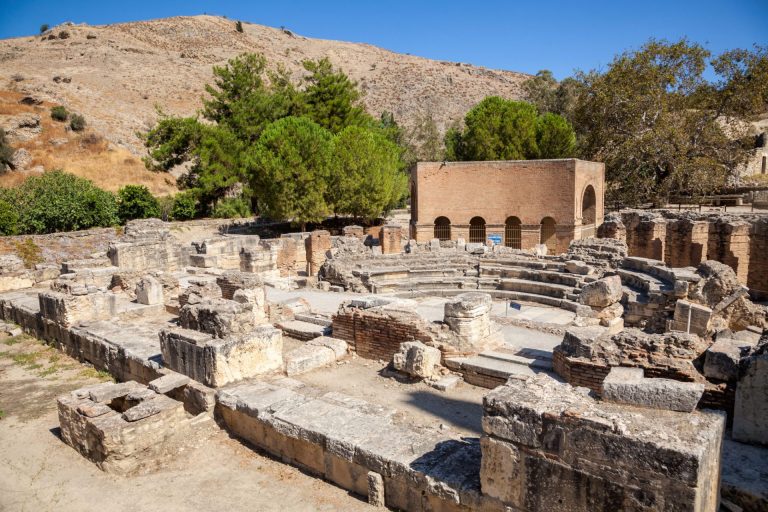Nestled in the heart of Crete, 44 kilometers southwest of Heraklion, lies Gortyn, a site that whispers tales of ancient glory and Roman grandeur. Our journey into the past began as we set foot in this historical marvel, a place where the layers of time seamlessly blend, offering a window into civilizations that once thrived on this fertile land.
Neolithic Roots and Minoan Majesty
Evidence points to Gortyn’s Neolithic beginnings around 7000 BC, marking it as one of the cradles of civilization on the island. However, it was during the Minoan era that Gortyn emerged from the shadows of Phaestos to etch its name in the annals of history. The lush Mesara Plain cradled this thriving colony, which soon outshone Phaestos to become a beacon of prosperity and culture.
The Roman Era: Gortyn’s Golden Age
The Roman conquest ushered in a golden age for Gortyn, transforming it into the pulsating heart of Crete and Cyrenaica’s capital. The remnants of Roman architecture, unearthed through meticulous excavations that began in 1884, tell a story of opulence and sophisticated urban planning. Among these, the Church of St. Titus stands as a testament to the early spread of Christianity, while the Roman Odeon, with its circular theatre and the famed Gortyn law code inscribed on its walls, offers a glimpse into the social and legal framework of the time.
The Legacy of Law and Legend
The Gortyn law code, discovered on the stones of the Odeon’s circular walls, represents the oldest recorded Greek legal system. These Doric inscriptions, once part of an ancient wall, were repurposed during the Odeon’s construction, only to be rediscovered and recognized for their historical significance in 1884. Nearby, a sacred plane tree marks the mythical union of Zeus and Princess Europa, adding a layer of divine romance to the site’s historical tapestry.
A Roman Hub of Power and Faith
At the heart of Gortyn lies the Roman Praetorium, the governor’s official residence and a focal point of administrative and residential architecture from the 1st century AD. The surrounding structures, including the Nymphaeum’s marble fountain and cistern, the Roman baths, and the temples dedicated to Apollo and various Egyptian deities, encapsulate the city’s religious diversity and architectural splendor.
Conclusion: A Journey Through Time
Our visit to Gortyn was more than a step back in time; it was an immersive experience into the depths of Cretan and Roman history. From its Neolithic roots to its zenith under Roman rule, Gortyn remains a silent witness to the ebb and flow of civilizations that shaped the destiny of Crete. As we departed, the ruins of Gortyn lingered in our minds, a reminder of the transient nature of power and the enduring legacy of culture and law.
Sorry, no records were found. Please adjust your search criteria and try again.
Sorry, unable to load the Maps API.
